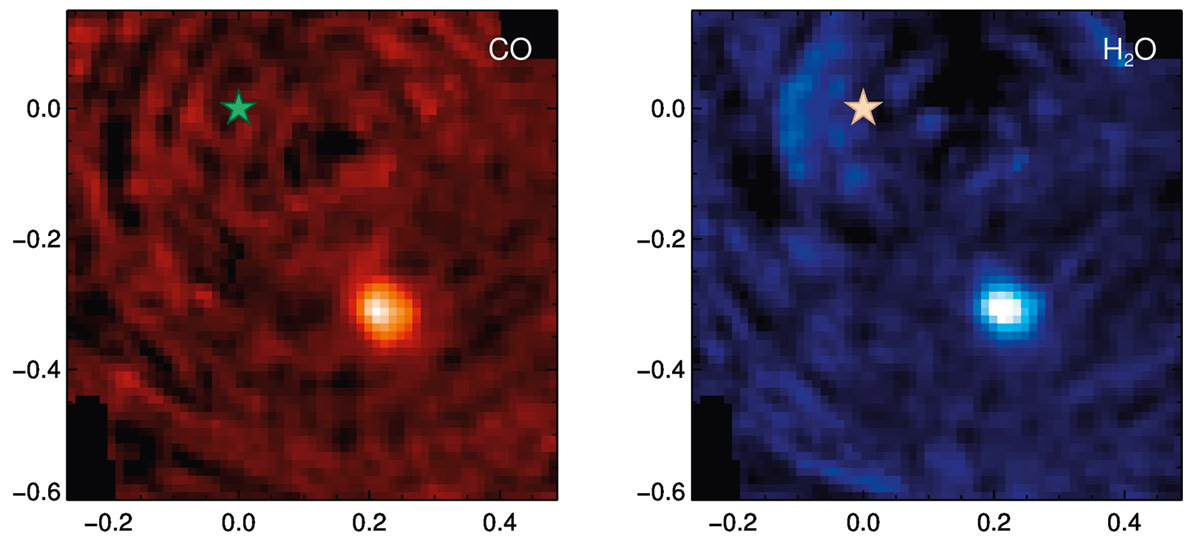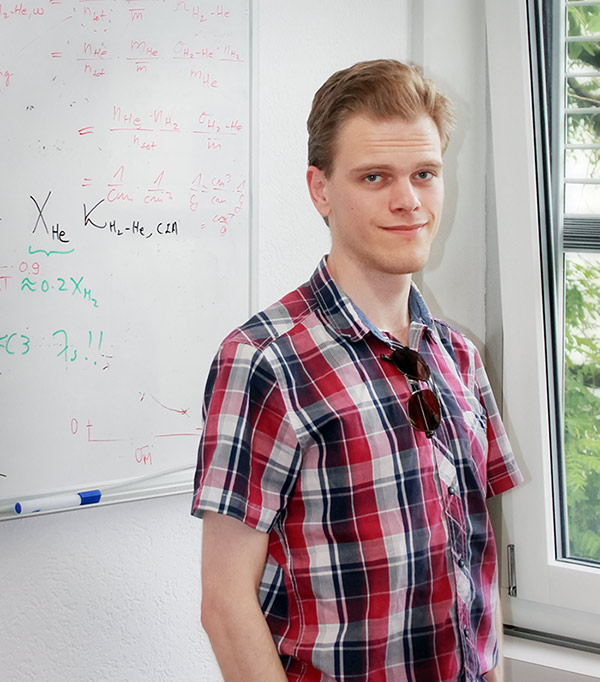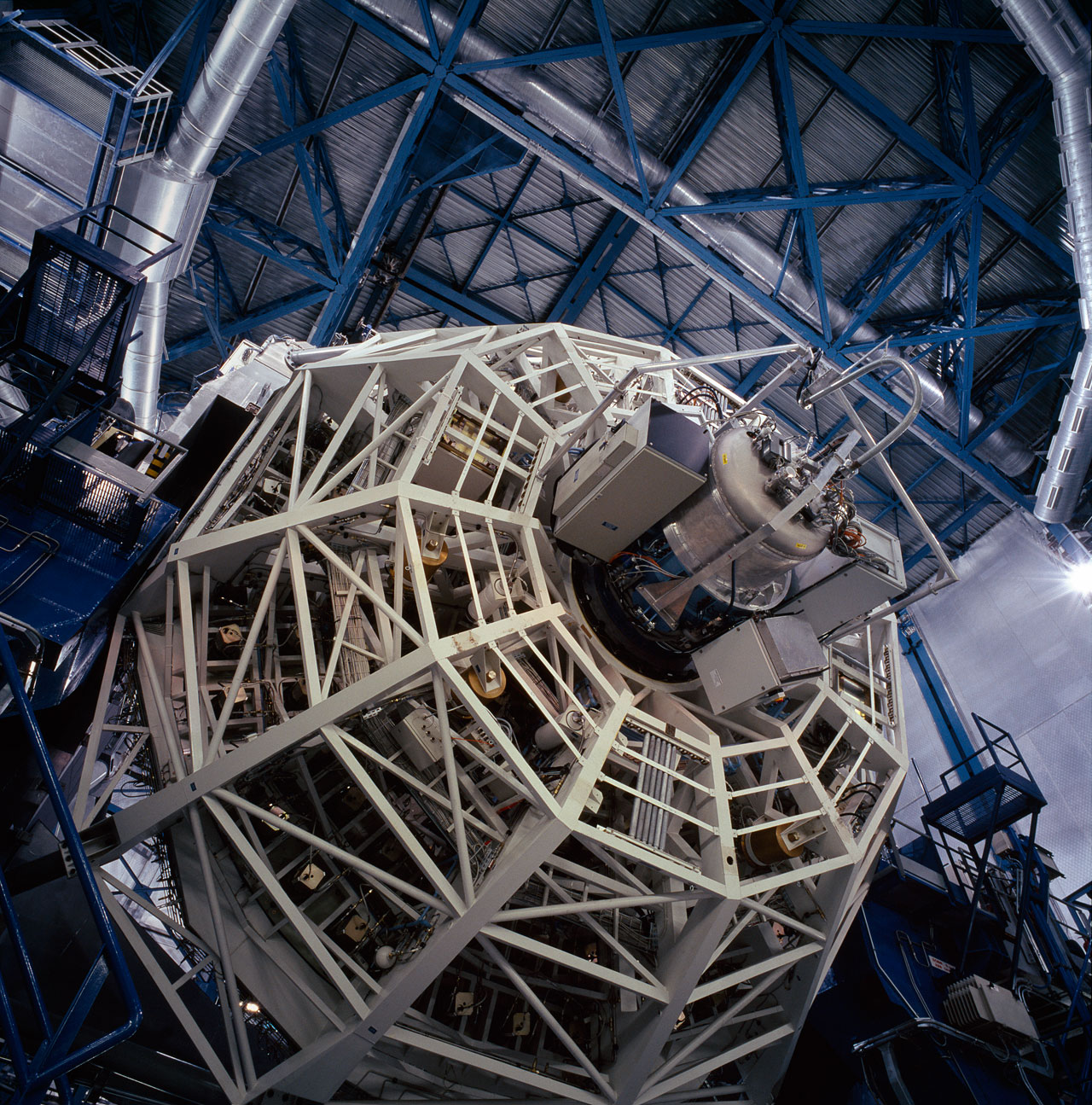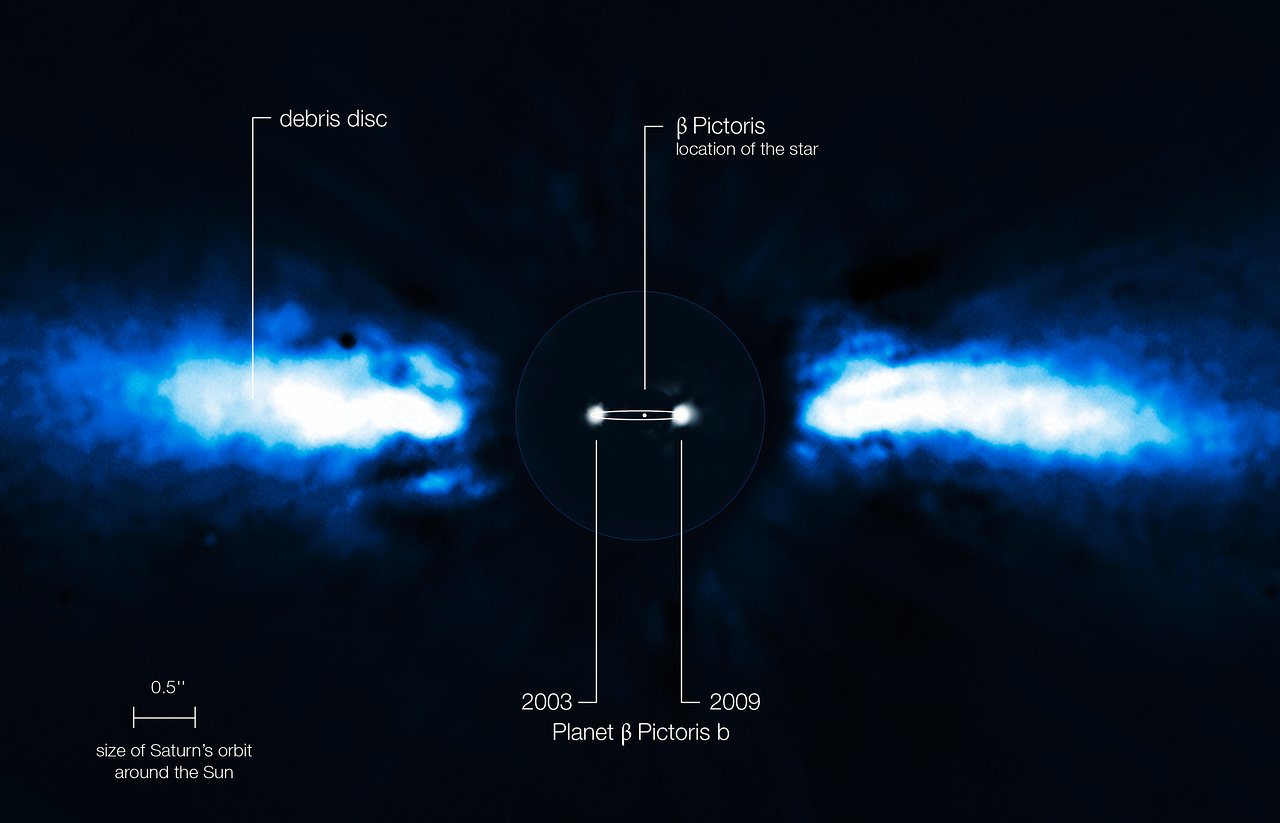
A SINFONI of Exoplanets
Astronomer Jens Hoeijmakers on how to peer into the atmospheres of distant worlds
- What an exoplanet is
- How SINFONI has been used to measure the atmosphere of an exoplanet
- The next big steps in the field
Q: Let’s start simple: what is an exoplanet?
A: Since 1995, we have known that many stars other than the Sun have their own “solar systems,” with the majority of stars hosting one or multiple planets. Exoplanetary systems come in all shapes and colours, meaning that they are very diverse. Astronomers have discovered planets ranging from gas giants to smaller, rocky planets. Some planets orbit far away from their star like the gas and ice giants in our Solar System, and some orbit very closely, with surface temperatures greater than 1000°C.
Q: Why do you think it’s important and exciting to study exoplanets?
A: The discovery of the existence of exoplanets has evolved as a major branch of astronomy in the past two decades. We now know of the existence of thousands of exoplanets, and this has shown that planets may even be more common than stars in our Universe! This ubiquitous presence of planets all around us begs the question of whether it’s possible for extraterrestrial life to exist. This is a major driving force behind the continued search for exoplanets and the detailed study of those that we’ve already discovered. But besides the exciting prospect of discovering life, the exoplanet population also gives us a unique window into understanding our own Solar System and the possible outcomes of the same planet formation processes that have made our Solar System the way that we see it today — essentially, studying exoplanets can help us understand how we got to be here.
Q: Your research looked at one exoplanet in particular: Beta Pictoris b. Why did you choose to look at this system?
A: Beta Pictoris b is maybe the most famous directly-imaged exoplanet, meaning that astronomers have managed to actually take a snapshot of the planet rather than infer its existence through its indirect effect on its star, as is most commonly done. Beta Pictoris b orbits a bright star about 70 light-years away from Earth, is in a system about 20 to 25 million years old and has a fairly hot surface, about 1700°C.
Beta Pictoris b is one of the easier (but still challenging) planets to image directly because it’s young and hot enough to be observed at infrared wavelengths. When stars and planets form in a large disk of gas and dust, known as the protoplanetary disk, the material from which the planets form is very hot. This means that newborn planets start off with very high temperatures, and throughout the first tens of millions of years of their lives, they slowly cool down as they radiate this heat away, making these planets visible at infrared wavelengths. This is the class of planets that we can directly image, and Beta Pictoris b is a typical example of such a young planet, which is why we chose to observe it — and, indeed, why it is one of the most famous directly imaged exoplanets.
Q: How did you observe Beta Pictoris b and what were you aiming to find?
A: We used existing data of the planet from the SINFONI spectrograph on ESO’s Very Large Telescope located at the Paranal Observatory in Chile. Our aim was actually to test out the instrument — to investigate to what extent an adaptive-optics-assisted integral field spectrograph like SINFONI can be used to study an exoplanet’s atmosphere.
SINFONI is a special instrument. Not only does it perform the high-contrast imaging necessary to separately image the planet from its brighter host star, but it also simultaneously generates a spectrum of each pixel in that image at a high enough resolution. This allows us to see absorption lines in the spectrum of the planet. These absorption lines are what tell us about the chemicals in the planet's atmosphere, and also about the planet's temperature and other physical parameters. In fact, our new technique relies on the fact that the planet's spectrum has absorption lines that are not present in the star that it orbits. This helps us disentangle the planet from its much brighter star, effectively increasing the contrast on top of the already high-contrast imaging from SINFONI. The instrument was not actually designed to be used in this way, so we’re the first to apply this technique.
The only other instrument in the world that can currently perform this type of research is the OSIRIS spectrograph at the Keck Observatory in Hawaii. It is very similar to SINFONI but is located at a much more northern latitude, meaning that SINFONI and OSIRIS can access complementary parts of the sky.

Q: So what did you and your team find out?
A: First of all, our analysis of the existing dataset confidently shows the presence of water and carbon monoxide in the atmosphere of Beta Pictoris b. This in itself is not a new result because both species were known (and expected) to be present. However, it is the first time that a high-contrast imaging instrument has been used to directly detect these absorption lines in an exoplanet’s atmosphere, thereby uniquely and robustly confirming their presence.
Q: Did you face any challenges during your research?
A: Our analysis was quite challenging because these observations were experimental. SINFONI is not tuned for these kinds of observations, so when the data was initially taken in 2014, it was quickly deemed too challenging even for the detection of the planet, let alone a measurement of its spectrum. In the case of this dataset, our method is more sensitive to the planet, but we also had to overcome the fact that the instrument is simply not designed to image a very faint planet next to a very bright star. This is why we strongly advocate that future, SINFONI-like instruments (such as the planned HARMONI instrument on ESO’s Extremely Large Telescope) should be outfitted with a coronagraph, which blocks out much of the starlight, making such observations even more powerful.
Q: What do you personally find most exciting about this research?
A: This is a clear example of using an existing dataset and instrument in a completely new way and finding exciting results. I think that there is no reason why the same analysis and observations couldn’t have been carried out 10 years ago, achieving the same results — and something similar is true for the entire field of exoplanets! The first exoplanets could have been discovered with technology that was already available over a decade earlier if only astronomers had taken the possibility of the existence of hot Jupiters seriously. That’s why I sometimes wonder what other new discoveries or applications of existing facilities are still hiding under our noses right now.
Q: What might this research lead to in the future? And what are the next big steps in the field?
A: The strength of our signal spells good news for the future, when new instruments will come online that are similar to SINFONI but much more powerful in terms of contrast and spectral resolution. For instance, our result came from over two hours of observations with SINFONI, but we calculated that the same result could be obtained using the Extremely Large Telescope in only 90 seconds — for a planet like Beta Pictoris that is five times closer to its host star! In this sense, our result is a clear demonstration of this analysis technique and should encourage ongoing development of these future instruments, especially for making them suitable for the high-contrast imaging of exoplanets.
Numbers in this article
| 70 |
Number of light years Beta Pictoris b is away from Earth |
| 90 | Number of seconds it would take the ELT to complete the same measurement |
| 1700 | Temperature, in degrees Celsius, of the surface of the planet |
| 20-25 million | Age of the Beta Pictoris system |
Biography Jens Hoeijmakers
Jens Hoeijmakers is a postdoctoral scientist working at the Geneva Observatory and the Center for Space Habitability in Bern, Switzerland. He did his undergraduate, Masters and PhD education in the exoplanet group led by Ignas Snellen in Leiden, The Netherlands. His main focus is the characterisation of exoplanets’ atmospheres, mostly hot Jupiters, which are still very enigmatic and poorly understood. Besides exoplanets, he likes travelling (being an astronomer has its advantages — though not all trips go to desert mountain tops), as well as cooking, the stock market and science fiction movies.





